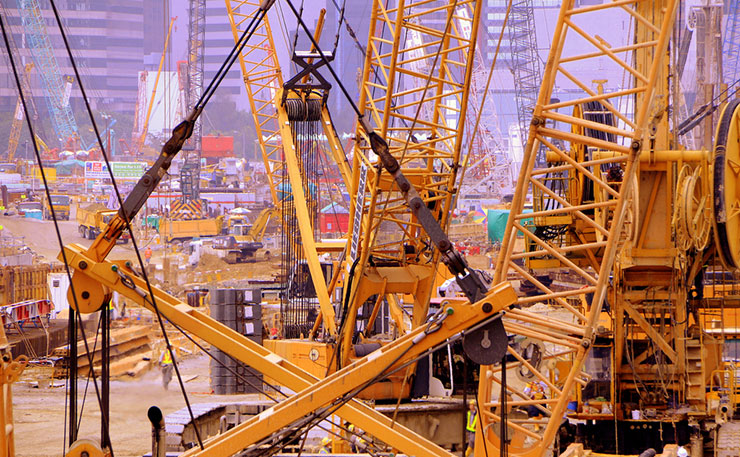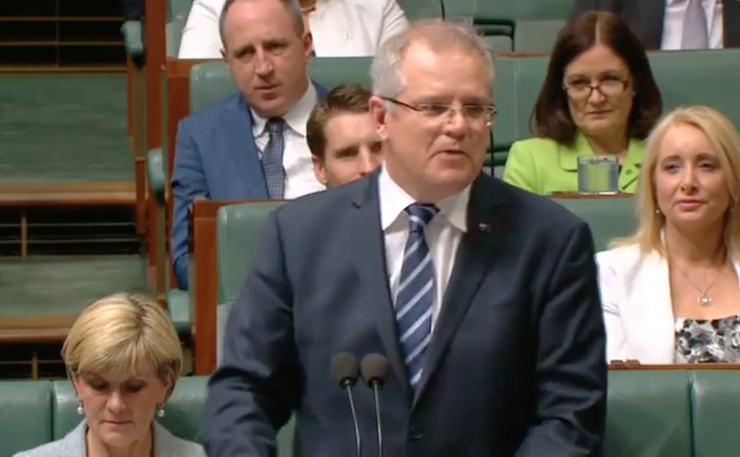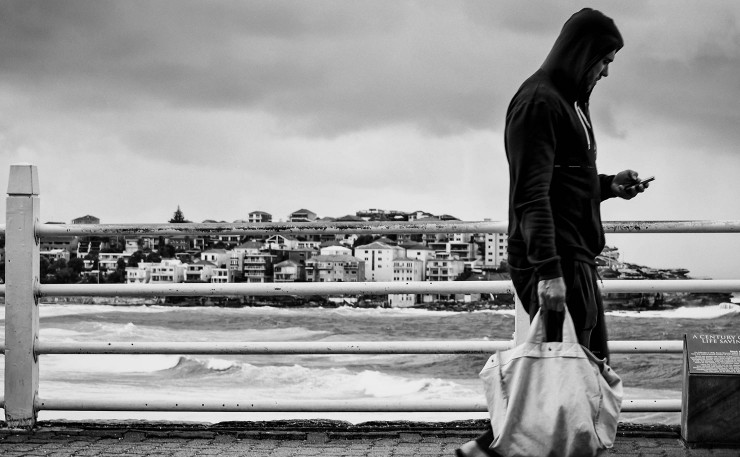Australian Governments have squandered an era of stunning prosperity. Ian McAuley explains.
In case we had any doubt, one thing we know for sure about 2015 is that the mining boom is over. Coal and iron ore prices have tanked, more than $100 billion has been wiped off the market capitalisation of our mining firms, and our trade deficits are worsening.
In further confirmation the budget deficit revealed on Tuesday was a shocker. The boom had given public revenue a windfall, allowing the Howard-Costello Government to finance tax cuts and to run a lazy fiscal policy, and allowing the Rudd-Swan Government to dodge the global financial crisis. But those days are gone.
Some may say that this is just business as usual – Australia’s economic history is one of commodity booms and busts. This boom is the fourth in the last fifty years. Although commodity prices may still fall further, in time excess stockpiles will be run down, easily-recovered ores will be depleted, and prices will start to recover. That’s been the nature of the commodity cycle.
“She’ll be right mate, if we can just hang on”.
But what we’re living through is not just another cyclical trough. Rather, it’s a fundamental change at the global level, and for Australia it’s almost certainly the end of a 200-year economic era.
To deal with each in turn.
The China boom – it won’t come again
The boom just past was exceptional because it coincided with China’s phase of extraordinary industrialisation and infrastructure investment.
The scale of China’s demand is hard to comprehend, but a couple of figures give us some idea of its magnitude and uniqueness. For example, in the three years from 2011 to 2013, China used more cement than the US had used over the entire twentieth century. And at its peak China was producing 800 million tonnes of steel a year, four times the amount any other country has ever produced.

It would be foolish to believe that China or any other country will ever see such a rapid expansion in resource-intensive growth – a growth driven in part, by its ideological legacy of central planning which puts so much emphasis on capital investment.
More basically, even as economies grow, new lighter and stronger materials are displacing older materials. For example, carbon fibre is displacing aluminium and steel in airplane and car manufacturing. Even where traditional metals are not completely displaced, new alloys and improved designs are making for lighter, and therefore less resource-intensive structures.
Then there’s coal. Most level-headed financiers and even economists in energy companies understand that thermal coal has no future, but the “coal is good for humanity” idea lives on in Australia. Coalition and Labor politicians are still gung-ho about the Galilee Basin project. They not only fail to understand that the world has changed; they also fail to understand how Australia must change, because 200 years of “she’ll be right” history is coming to an end.
The end of our “settler society”
Economic historian Ian McLean, in his 2013 book Why Australia Prospered, describes Australia as a “settler society”. Settler societies are mainly “New World” countries where colonists have displaced Indigenous populations – usually brutally – and have exploited easily-won natural resources. As a typical settler society Australia has enjoyed strong economic growth (some of which is a statistical artefact because depletion of natural resources is not taken into account), boosted by immigration, which in turn has kept the population young and healthy, thus keeping budgetary demands for health care and pensions in check.
Investors have done well, helped by a growing market and opportunities for unearned profits in areas such as land speculation in expanding cities. Like other settler societies we have been highly dependent on foreign capital, attracted by prospects of further growth. Those foreign capital inflows have kept our currency highly valued, allowing us to enjoy a high material standard of living.
Ever since 1807, when John Macarthur made the first shipment of Merino wool to England, the Australian economy has operated on the “settler society” model, providing raw or semi-processed commodities for others to add value.
That model has given us a bumpy ride, but time and again, just as it has looked like ending, there have been other strokes of luck – Lang Hancock discovers vast iron ore deposits in the Pilbara, the Japanese economy recovers from the devastation of war, the Chinese decide to ditch the austerity of communism. As Donald Horne wrote 50 years ago, “Australia is a lucky country, run mainly by second-rate people who share its luck.”
This time there isn’t much luck on the horizon, but we still have second-rate policymakers and managers, most of whom don’t realise that the “settler society” days are over.
The dominant thinking in Canberra, particularly as expressed by Treasurer Scott Morrison, is that “small government” and corporate and personal tax cuts might keep Australia “open for business” a little longer, staving off the necessary adjustments until after the next election (State premiers, who have the hard job of delivering services, are much more frank about the need for higher taxes).

We need to keep in mind that we already have the smallest public sectors of all prosperous “developed” countries, and that our deficiencies in transport and communication infrastructure and in education – results of inadequate past public investment – are holding us back.
When a Treasurer has to offer tax cuts to attract investment we should be truly worried, for tax cuts are the incentive of last resort used by countries that have little else to offer investors.
And our businesspeople, conditioned by 200 years of easy profits, are on a strike of capital. This year’s corporate returns have seen an unprecedented lack of new corporate investment: firms have been either reducing their debt or paying out high dividends.
It’s as if they cannot understand that in the future we may have to get used to the more modest real returns that satisfy investors in Japan and Europe.
And it’s as if we don’t realise we must pay our own way in the world – a world that is not going to continue providing the finance to compensate for our profligacy, and that is not going to let us go on degrading the planet’s atmosphere in order to subsidise the coal industry.
Malcolm Turnbull’s innovation statement is a step in the right direction. But it’s only one step on what may be a long and difficult journey in fixing our weak and outdated economic structure.
We must improve our public revenue. We must change our tax incentives to reward productive investment and discourage idle speculation.
We must break the old culture of entrenched labour-capital conflict (characterised by the commission into union corruption).
We must come to grips with climate change by putting a price on carbon and closing our coal-fired power stations.
We must end the corporate sense of entitlement and shut off opportunities for rent capture.
And we must address widening wealth and income inequality which are threatening the very legitimacy of our political and economic arrangements.
Hopefully in 2016, a decade after Donald Horne’s death, we will make progress to becoming a real “developed” country, and not just a third world country temporarily enjoying a first world living standard.
Donate To New Matilda
New Matilda is a small, independent media outlet. We survive through reader contributions, and never losing a lawsuit. If you got something from this article, giving something back helps us to continue speaking truth to power. Every little bit counts.





